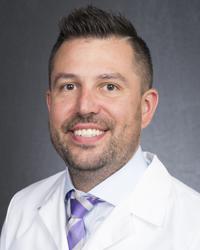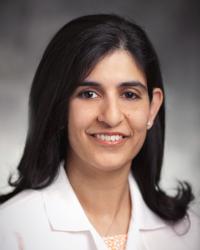The surprising causes and signs of lung cancer
November 3, 2025
Cancer is a disease where some of the body’s cells grow uncontrollably and spread to other areas. When cancer cells appear in your lungs, it’s appropriately known as lung cancer. Of the many risk factors that can increase your chances of getting the disease, the most significant is smoking tobacco that is found in cigarettes and cigars. However, other risk factors, including some less well known, are important to keep in mind as you manage your overall health and wellness.
Five surprising risk factors of lung cancer
While smoking tobacco is the leading cause of lung cancer, not all people who get lung cancer have smoked in the past. In fact, some causes of the disease come from a person’s environment and daily life, many of which they have no control over.

Secondhand smoke
Smoking cigarettes causes the majority of lung cancer cases, by far. However, you don’t have to light up to increase your risk. Secondhand smoke exposure (when someone breathes in smoke that has been breathed out by others) increases the risk of lung cancer by as much as 20 to 30%. This means that simply living with a smoker, or regularly being around one, can be enough to get the disease.
Alcohol
It may seem strange to think that something which isn’t entering your lungs can increase your risk for cancer. However, that may be the case with alcohol. While the connection between alcohol and lung cancer is still not fully understood, some research suggests that there is a direct link. But more research is needed as people who heavily drink also tend to be smokers. What is known is that alcohol raises the risk of many different types of cancer.
Radiation therapy
Radiation therapy is used to kill cancer cells. However, the very treatment that saves lives may also be a potential cause for lung cancer. Over time, radiation can damage the DNA in healthy cells, turning them into cancer. But the positives of radiation therapy often outweigh the risks, and the chance of developing new cancer from radiation therapy is low and may take years to develop.
Radon
Radon is a colorless, odorless radioactive gas that can have a big impact on your health and indoor air quality. In fact, radon is the number one cause of lung cancer among non-smokers. Because you can’t see or smell radon, the only way to know your level of exposure is by testing for it. Thankfully, home radon test kits are easily available at hardware stores, or you can hire a professional for stronger peace of mind.
Poor air quality
Outdoor air pollution continues to be a major contributor to many diseases around the world. In the case of lung cancer, it’s estimated that hundreds of thousands of lung cancer deaths are attributed to particulate matter air pollution (mixture of solid particles and liquid droplets). Some air purifiers may reduce the negative health effects of these particles.
What are the signs of lung cancer?
Like all cancers, the earlier it’s detected the better the chance of survival. Unfortunately, lung cancer symptoms often go unnoticed until the disease reaches an advanced stage. They can also vary widely, but there are some common signs that can be concerning:
- Persistent cough. A chronic cough that lasts more than a few weeks, and especially if you’re coughing blood, is a common early indicator.
- Shortness of breath. Difficulty breathing during everyday activities, especially if they previously felt manageable, can signal a problem.
- Chest pain. Pain in the chest, shoulders or back that persists or worsens with deep breathing, coughing or laughing could be a sign of lung cancer.
- Unexplained weight loss. Losing weight without trying is a common symptom of cancer.
- Hoarseness. The presence of a tumor affecting the vocal cords or surrounding nerves can cause changes in voice.
- Recurring respiratory infections. Tumors can cause an obstruction in the airways, leading to frequent infections.
If you smoke, are frequently exposed to the risk factors mentioned, or have noticed any of these symptoms, it’s time to speak with a doctor. When caught early, the lung cancer survival rate over five years is almost 65%. That number drops dramatically if discovered in more advanced stages.
Lung cancer screening at Loyola
Loyola’s lung cancer screening program provides low-cost screening at facilities located throughout the west side of Chicago, including:
- Gottlieb Memorial Hospital
- Loyola Medicine Burr Ridge
- Loyola Outpatient Center
- Loyola Medicine Tinley Park
- MacNeal Hospital
To make an appointment or learn if you may need a lung cancer screening, call 888-584-7888.
Lung cancer treatment at Loyola Medicine
Loyola Medicine’s lung and thoracic oncology program combines compassionate, multidisciplinary care with leading research to fight the number one cause of cancer death for American men and women. Taking a comprehensive and individualized approach to patient care, Loyola offers a wide variety of services including cancer prevention, diagnosis, treatment, research and supportive care.






